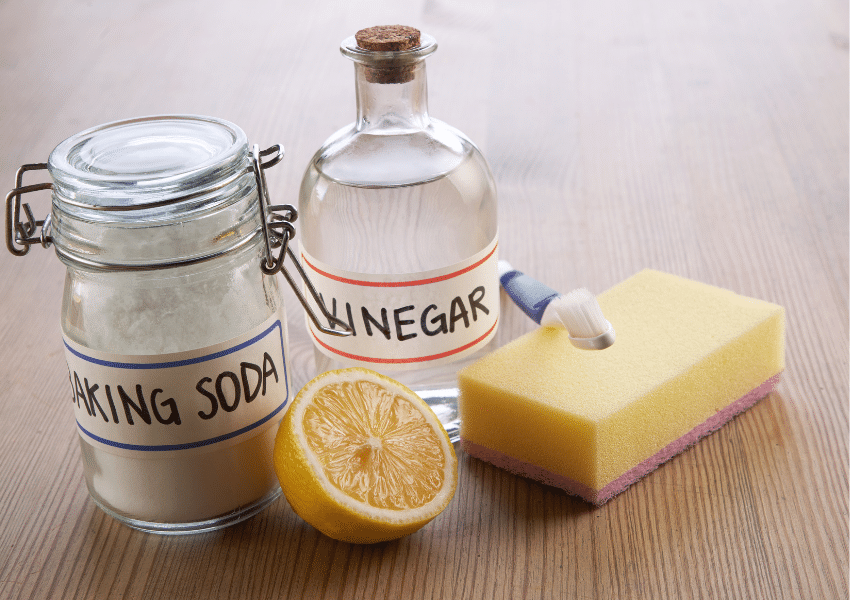
by California Casualty | Helpful Tips |
When the weather turns chilly, you’re not the only one looking for a warm place to stay. Each year, millions of homes become unwitting hosts to mice and other rodents seeking shelter from the cold. These tiny intruders can slip in through openings as small as a dime — often unnoticed until the telltale signs appear. From mysterious scratching in the walls to unexpected nibbles on food packages, here’s how to tell if you have mice — and what to do about it before they settle in for the season.
Why Mice Are a Problem
Mice might seem harmless, but they can cause surprisingly big problems. They chew through wires (creating fire hazards), gnaw on furniture, and even damage appliances. Beyond property damage, they can affect your health — contaminating food and water with saliva, urine, and droppings that can carry bacteria and viruses. Mice also transport unwanted hitchhikers such as fleas, ticks, and mites.
Though they rarely bite unless cornered, mice reproduce quickly. A single pair can produce up to 35 babies a year, turning a small problem into a full-blown infestation before you know it. Because mice are nocturnal and shy, you might not actually see them, but that doesn’t mean they aren’t there. Fortunately, they leave plenty of clues.
Signs That You Have Mice
Droppings
Mouse droppings look like small, dark grains of rice or chocolate sprinkles. You’ll often find them near food sources — under sinks, inside cupboards, in drawers, and along walls. Basements, attics, and utility rooms are also common hotspots. Finding droppings in multiple places usually indicates an active infestation.
Tracks and Smudge Marks
Mice travel the same paths repeatedly, leaving behind grease marks, footprints, and urine stains. To check for tracks, shine a flashlight or black light at a low angle along walls or behind appliances. You can also lightly dust areas with baby powder or flour — if mice are active, you’ll spot tiny footprints the next morning.
Chew Marks
Mice constantly gnaw to keep their teeth from overgrowing. Look for small chew marks on food packaging, wires, wood, or even plastic containers. If you find gnawed cords or frayed wires, unplug appliances. Replace them and/or call an electrician.
Nests
Mice build cozy nests close to food sources, usually in hidden areas such as behind ovens, refrigerators, dishwashers, or water heaters. A mouse nest looks like a messy pile of shredded paper, fabric, or dried leaves. If you find one, wear gloves and dispose of it carefully — then clean and disinfect the area.
Noises in the Walls
That faint scratching or scampering you hear at night might not be your imagination. Mice often make squeaking or rustling sounds as they move between walls, under floors, or inside cabinets. These noises are usually a sign that they’re gathering food or nesting materials.
Strange Smells
A strong, stale ammonia-like odor (similar to a baby’s diaper) is a classic sign of a heavy mouse presence. You might also detect a musty, musky scent near nesting areas. A sharp, pungent smell can indicate a dead mouse in a wall or vent.
Pet Behavior
Your dog or cat may notice mice before you do. If your pet seems fixated on a particular corner, wall, or appliance — especially at night — it might be reacting to movement or scent. Use a flashlight to inspect the area for droppings or gnaw marks.
Actual Sightings
Spotting a mouse darting across your floor is a clear warning. Mice typically stay hidden, so seeing one in plain sight often means others are nearby.
Allergic Reactions
If someone in your home suddenly develops unexplained allergies or worsened asthma, it could be triggered by mouse fur, droppings, or dander. In that case, it’s worth checking for other signs of an infestation.
How to Control a Rodent Infestation
Once you’ve confirmed that you have mice, it’s time to act.
Seal entry points.
Inspect your home for small gaps, holes, or cracks — around doors, windows, vents, pipes, and utility lines — and seal them with steel wool, caulk, or hardware cloth. Remember, mice can squeeze through spaces as small as a dime.
Eliminate food and water sources.
Store all food (including pet food) in airtight containers. Wipe up crumbs and spills promptly. Fix leaky pipes and don’t leave standing water in sinks or pet bowls overnight.
Choose traps wisely.
There are several types of traps, including snap traps, electronic traps, and glue boards. However, these are inhumane and cause unnecessary suffering. Live traps are a more compassionate option — just make sure to release mice far from your home so they won’t return You can also call a licensed exterminator for professional help, especially if the problem is widespread.
Clean thoroughly.
After removing mice, clean and disinfect any contaminated areas with a mixture of bleach and water (wear gloves and a mask). Dispose of droppings and nesting materials in sealed plastic bags.
How to Prevent Mice from Coming Back
The best way to keep your home mouse-free is through prevention:
- Install door sweeps on all exterior doors.
- Repair or replace damaged screens.
- Add screens to chimney openings and vents.
- Seal interior and exterior cracks with caulk or steel wool.
- Keep storage areas organized and clutter-free — mice love hiding spots.
- Store food, including pet food and birdseed, in sealed containers.
- Empty garbage cans regularly.
- Avoid leaving pet food out overnight.
You can also use natural deterrents to make your home less inviting. Mice dislike strong scents like peppermint oil, eucalyptus, white vinegar, and citronella. Soak cotton balls in these oils and place them near entry points or suspected nesting areas.
Mice are resourceful, fast, and surprisingly determined. But with a little vigilance and prompt action, you can stop an infestation before it gets out of hand. A proactive approach now will help ensure that the only guests settling in for the season are the ones you actually invited.
This article is furnished by California Casualty, providing auto and home insurance to educators, law enforcement officers, firefighters, and nurses. Get a quote at 1.866.704.8614 or www.calcas.com.

by California Casualty | Auto Insurance Info, Helpful Tips, Safety, Travel |
As the temperature drops and the leaves begin to fall, road conditions change in ways that can catch even experienced drivers off guard. Deer are more active, wet leaves can be as slick as ice, and shorter days mean more time driving in the dark. Here’s what to watch for this season—and how to steer clear of danger.
Watch for Deer on the Move
You’ll often see deer during dawn and dusk at the side of the road during the fall months. That’s when they’re foraging for food. Keep a sharp eye out near wooded areas and where deer crossing signs are posted. If you must stop, use your hazard lights to alert other drivers. A few tips to remember:
- Deer travel in groups; if you see one, more are likely close behind.
- Avoid swerving. Swerving can confuse the animal and cause them to run in the wrong direction. It also can put you in the path of oncoming traffic. Instead, slow down in a controlled manner and let the deer pass.
- Know your insurance coverage. Damage from hitting a deer is typically covered by comprehensive insurance—not liability. Check to see if your policy includes it.
Beware of Leaf Trouble
Fallen leaves may look pretty, but they can cause more problems than you might think. Here are just some of the hazards.
Wet Leaves
When wet, leaves can be as slick as ice. They can also block roadside drains, creating puddles and hidden hydroplaning risks. make sure your tires are properly inflated to help maintain grip. If you drive over wet leaves and your tires lose traction:
- Don’t slam the brakes. Ease off the gas. If you need to brake, use a light pumping motion.
- Steer gently in the direction you want to go.
- When you feel the tires connect with the road, you can proceed as normal.
Dry Leaves
Dry leaves and hot car parts don’t mix. Avoid parking over leaf piles. Your exhaust or catalytic converter can ignite them, even if the engine’s off. Also, keep leaves away from garages and undercarriages so there’s no chance that they can cause trouble.
Around Your Car
Leaves can clog air filters, radiators, and windshield gullies. Remove them regularly to prevent foul-smelling moisture buildup and potential damage to your car’s paint or electronics.
Hidden Potholes and Road Hazards
A thick carpet of leaves — or later, snow — can hide potholes, curbs, and lane markings. Drive cautiously and maintain extra distance from the car ahead. Slow down near leaf piles; kids sometimes play in them. And remember, some drivers are more focused on the foliage than the road, so stay alert.
Adjust to Early Darkness
When daylight savings time ends, you may find yourself driving home in the dark more often. Make sure your headlights and brake lights are working properly. Darkness also affects depth perception, so give yourself more space and time to react.
- Drive at a speed where you can stop within your headlight range.
- Use high beams when safe and dim them for oncoming cars.
- Watch for pedestrians and pets, especially during dusk and dawn when visibility is lowest.
Reduce Sun Glare
The sun sits lower in the sky during fall, which means more blinding glare during morning and evening commutes. Keep sunglasses handy, use your visor, and clean your windshield inside and out — streaks and dust scatter light and make it harder to see. Replace your windshield wipers as needed. If glare is intense, slow down and increase your following distance.
Handle Fog and Frost the Right Way
Foggy and frosty fall mornings reduce visibility fast. They can sneak up on your car’s windows as temperatures fluctuate. Don’t drive with foggy or icy glass. Use your defroster and a scraper or try a DIY de-icer (three parts vinegar to one part water).
- If it’s foggy, engage your fog lights to increase visibility. Don’t use your high beams; they have the opposite effect — reflecting off the fog and temporarily blinding you.
- Turn on your defroster or crack a window to balance temperatures and prevent your windshield from fogging.
- Remember: frost on your windshield means it could also be on bridges and overpasses, which freeze first. Proceed with caution.
Keep an Eye on Tire Pressure
Cooler weather means lower tire pressure. For every 10-degree drop in temperature, tires can lose about one PSI. Low pressure affects traction, braking, and fuel efficiency, so check often and inflate your tires as needed.
Share the Road with School Buses
Fall also means back-to-school season. Be aware of how that impacts traffic safety and know the rules about school buses:
- Yellow flashing lights: The bus is preparing to stop.
- Red lights and extended stop arm: The bus has stopped for children.
- Always stop — never pass. Watch for kids crossing the street or walking near the bus and remember that visibility is lower in early morning and late afternoon light.
Don’t Forget Your Insurance
Even the most cautious drivers can’t prevent every accident. Make sure your auto insurance is up to date so that you have peace of mind when the unexpected happens.
Safe travels this season!
This article is furnished by California Casualty, providing auto and home insurance to educators, law enforcement officers, firefighters, and nurses. Get a quote at 1.866.704.8614 or www.calcas.com.

by California Casualty | Educators, Helpful Tips |
As a teacher, you don’t just teach lessons—you pour in your time, energy, and heart. The good news? Lots of businesses are ready to give you a gold star in return: discounts! From classroom supplies to cozy clothes, travel to tech, you can snag serious savings just by flashing your school ID. Call it your well-deserved “extra credit.”
We’ve made it easy—just click a store’s name to see the deal. And here’s a pro tip: many retailers roll out even bigger perks during Teacher Appreciation Week, so keep an eye out for those bonus savings.
Auto & Home
Packing up your home? Teachers save 20% on local moves and 15% on one-way moves.
America’s everyday heroes deserve savings every day. Educators (and your families) get special rates on home and auto insurance.
Catch some well-earned ZZZs with 10% off Purple’s famously comfy mattresses.
Enjoy peace of mind for less—teachers get 20% off Ring doorbell cameras.
Get Artsy
Stock up on glue sticks, glitter, and all things crafty! Teachers score 15% off their entire purchase—even sale items.
Bags & Backpacks
From colorful totes to sturdy backpacks, educators enjoy 10% off Vera Bradley favorites.
Bookworm’s Paradise
Join the invitation-only Educator Program for exclusive discounts on bestselling books and classroom materials.
Educators get 20% off in-store purchases plus free shipping online. Extra savings roll in during Educator Week!
Clothing that’s Classroom Chic
Look sharp for less with a 20% educator discount.
Save 15% online or in-store—prep-school style, anyone?
Enjoy 20% off every purchase from this California-based retailer.
For practical and timeless style, teachers get 10% off their order.
Save 15% on cool, casual staples in-store and online.
Go preppy with 15% off Vineyard Vines’ iconic styles.
Foodie Favorites
Teachers snag a membership for just $25 (regularly $60) and get a $10 reward to boot.
Get half off your first box, 10% off future boxes, free shipping on the first—and yes, dessert for life. Now that’s a sweet deal!
Sonic
Join the Sonic Teachers’ Circle for free deals and tasty discounts. Just enroll in the Sonic app and let the rewards roll in. Download the Sonic app, then create an account, go into Settings, tap the Profile icon, tap Account and select “I’m a Teacher” to enroll.
Shoes that Score an A+
Educators save big—30% off retail and 20% at outlet stores.
Comfy and quirky, Crocs offers 15% off full-priced styles.
Get 20% off Rothy’s stylish, sustainable shoes made from recycled materials.
Stock Up on Supplies
Earn 25% back in bonus rewards on qualifying purchases, plus a one-time 20% discount when you sign up.
Sharpen your savings with 10% off for educators.
The Reward a Classroom program at Staples enables parents to donate their Staples rewards straight to your classroom.
Target Circle Teacher Appreciation brings discounts across classroom supplies, food, home goods, clothes, and more.
Tech Time
Apple offers educator discounts on various products including Macs, iPads, iPhones, Apple watches, AirPods and more.
This online design program is 100% free to teachers. Create infographics, posters, video, and more.
Hewlett Packard offer savings of up to 40% on advanced technology.
Verizon offers discounted mobile phone plans and home internet pricing for educators.
Travel & Adventures
Enjoy $150 off your next sun-soaked getaway – don’t forget the sunscreen!
Teachers get a free annual pass with a 20% discount on onsite food and merchandise purchases. You also get 20% off tickets for friends and family.
Educators can save up to 25% on everyday base rates for rental cars and enjoy some bonus offers too!
K-12 teachers get complimentary entry to the visitor complex with an educator study pass.
Save when booking accommodations through Hotels.com—perfect for that much-deserved getaway.
Do you have a favorite teacher discount that’s not mentioned here? Share it in the comments.
This article is furnished by California Casualty, providing auto and home insurance to educators, law enforcement officers, firefighters, and nurses. Get a quote at 1.866.704.8614 or www.calcas.com.

by California Casualty | Helpful Tips |
Who says cleaning has to come in a plastic bottle filled with mystery chemicals you can’t even pronounce? With a few simple pantry staples—think vinegar, baking soda, and a lemon peel—you can whip up DIY cleaning products that are safe, budget-friendly, and surprisingly powerful. Bonus: they smell a whole lot better, too.
Pantry Powerhouses: The Magic Behind DIY Cleaners
Before diving into recipes, let’s get to know a few key ingredients that make these formulas shine:
- Baking Soda: Also known as sodium bicarbonate, this kitchen staple is not just for baking—it’s a powerful cleaner, too. Its mild abrasiveness makes it great for scrubbing, while its whitening, brightening, and deodorizing properties leave surfaces fresh and clean.
- Vinegar: An all-star degreaser and deodorizer, vinegar is a fantastic cleaner for glass and nonporous surfaces. It’s acidic, so avoid using it on natural stone like granite or marble, cast iron, stainless steel and unfinished wood—as it could corrode or damage them. Never mix vinegar with bleach (or you risk a dangerous reaction).
- Citric Acid: Found naturally in citrus fruits, citric acid is sold in powder form. It is excellent at cutting grease, removing stains, and tackling mineral deposits. It’s not good for all surfaces, though. Like vinegar, it is high in acidity. Skip citric acid on wood floors, electronics, copper, brass, and natural stone.
A Note on Mixing Vinegar + Baking Soda
That fizzy foam is fun and can help lift dirt—but baking soda and vinegar neutralize each other when combined. The leftover liquid isn’t a strong cleaner. Use them separately for best results.
Tried-and-True DIY Recipes
We researched some of the most popular do-it-yourself formulas for homemade household cleaners. Do you have a favorite that’s not on this list? Be sure to share it in the comments.
All-Purpose Cleaner
- ¼ cup Dawn dish soap
- ½ cup lemon juice
- ¾ cup vinegar
- ½ cup rubbing alcohol
- 1¼ cups water
Mix the ingredients above and store in a spray bottle. Pro tip: Infuse the vinegar with lemon, orange or grapefruit peels for 1–2 weeks for a fresh scent and extra grease-cutting power.
Alternatively, you can use a simpler version of just ½ cup white vinegar and 4 cups warm water for an all-purpose cleaner. Cleaning glass? Use equal amounts vinegar and water to remove fingerprints and smudges.
Carpet Freshener
- 2 cups borax
- 1 cup baking soda
- 10 drops essential oil
Mix the ingredients above and store them in an airtight container. When you’re ready to use it, sprinkle the mixture on your carpet. Let it sit 30 minutes, then vacuum. Not only does it freshen the room, it helps repel pests and deter rodents.
Carpet Stain Remover
- Baking soda
- 1 Tbsp. Dawn dish soap
- 1 Tbsp. white vinegar
- 2 cups warm water
Sprinkle baking soda on the stain, wait 10 minutes, then vacuum. Mix the dish soap, vinegar and water, and apply with a sponge. Use a clean cloth to blot the moisture. Repeat with sponging the water mixture and blotting until the stain disappears.
Dishwasher Detergent
- 8 oz castile soap
- 1 cup water
- 3 Tbsp. vinegar
Mix ingredients together and store in an airtight container. When you are ready to run the dishwasher, add 1 tablespoon per load.
Drain Cleaner
- ½ cup borax
- ½ cup salt
- 1 cup white vinegar
Mix the above ingredients into a paste and pour it into the drain. Let it sit 30 minutes, then flush with boiling water.
Fabric Softener
- 5½ cups water
- 15 oz. hair conditioner
- 2½ cups vinegar
- 20 drops essential oil (optional especially if your hair conditioner has a nice scent)
Mix and store. Use ¼ cup per wash during the rinse cycle.
Grout Cleaner
Add water to baking soda until it forms a paste. Apply that paste to the grout. Let it sit 15 minutes, then scrub with a stiff brush and rinse with water.
Hardwood Floor Shine
- Bucket of warm water
- Few drops natural dish soap
- 1 tsp castile soap or olive oil
Mop as usual to restore the shine without damaging the wood.
Soft Scrub Cleanser
- 1½ cups baking soda
- ½ cup liquid laundry soap
- 10 drops tea tree, lavender, or lemon essential oil
Mix into a paste and store airtight. Rehydrate with water if it dries.
Toilet Bowl Cleaner
- 1 cup baking soda
- ¼ cup citric acid
- ½ cup vinegar
Mix the dry ingredients—the baking soda and citric acid. Sprinkle that powder mixture in the toilet bowl. Then, add vinegar to the bowl, which will cause it to foam. Scrub and then flush.
Cleaning and Protecting
For some additional inspiration, check out our blog on 5 Hacks for Cleaning Your House While Everyone’s Home.
Of course, taking care of your home goes beyond keeping it clean—it’s about protecting everything you’ve worked so hard for. At California Casualty, we understand your home is your greatest investment, and we’re here to make sure it’s fully protected with the right insurance coverage.
This article is furnished by California Casualty, providing auto and home insurance to educators, law enforcement officers, firefighters, and nurses. Get a quote at 1.866.704.8614 or www.calcas.com.

by California Casualty | Nurses |
When most people picture a nurse, they imagine bedside care in a hospital—checking vital signs, administering medications, and comforting patients. While that’s certainly a cornerstone of the profession, today’s nursing world is far broader and more dynamic than ever before. Nurses are branching out into unexpected environments, leveraging new technologies, and carving out specialties that align with unique passions and lifestyles.
From tending to campers in the woods to caring for patients at sea or investigating crime scenes, nursing offers an incredible variety of career paths. If you’ve ever wondered what opportunities lie beyond the hospital floor, here are some exciting and specialized roles that just might be your perfect fit.
Adventure-Filled Roles
Amusement Park Nurse
If you thrive in high-energy environments, becoming an amusement park nurse could be a thrilling fit. These nurses respond quickly to everything from bumps and bruises to medical emergencies, often acting as first responders until patients can be transported to hospitals. Documentation and assessment skills are critical, as is the ability to communicate across language and cultural barriers. Registered Nurses (RNs) with strong emergency or trauma backgrounds shine in this role.
Camp Nurse
Imagine trading fluorescent lights for fresh air and the laughter of children. Camp nurses provide care at day camps and overnight programs, handling everything from bug bites and sprains to more serious conditions. Some camps focus on children with disabilities or chronic illnesses, which requires additional vigilance and compassion. Nurses often manage the camp health office and keep detailed records. An ER, pediatric, or trauma background can prepare you well for this role.
Cruise Ship Nurse
For those with wanderlust, cruise ship nursing blends healthcare with travel. Onboard, you’ll staff both walk-in clinics for routine needs and fully equipped ERs for emergencies. You’ll treat passengers from around the world, handle acute symptoms, and sometimes navigate international laws and insurance complexities. Expect close living quarters with other crew members and lots of adventure at sea. RNs with critical care or emergency experience—and a valid passport—are in high demand.
Military Nurse
Military nurses provide care to active-duty soldiers, veterans, and their families both at home and overseas. Beyond medical expertise, this role requires resilience and adaptability, as nurses may practice in challenging environments. It’s a career that combines service to country with service to patients.
Travel Nurse
Want variety without committing to one location? Travel nurses work short-term contracts at hospitals and clinics across the country—and sometimes internationally. While the staffing agency is your official employer, your workplace can change every few months, offering endless opportunities to explore new settings. Travel nurses need to adapt quickly to different teams, technologies, and patient populations. A BSN or ADN is required, and additional certifications make you even more competitive.
Patient-Centered Specialists
Hospice Nurse
Providing end-of-life care requires both clinical expertise and deep compassion. Hospice nurses support terminally ill patients and their families, offering comfort and dignity during difficult times. While emotionally challenging, many nurses find this work profoundly rewarding. A nursing degree is required, and certification as a Certified Hospice and Palliative Nurse is available for those who wish to specialize further.
Nurse Midwife
Nurse midwives guide women through pregnancy, childbirth, and postpartum care, often forming close bonds with families. In many states, they can practice independently from physicians. This role blends advanced medical knowledge with a holistic, patient-centered approach to women’s health.
School Nurse
School nurses are vital to student health and wellness, addressing everything from playground injuries to chronic conditions like asthma and diabetes. They conduct screenings, administer medications, and play a critical role in keeping kids healthy and ready to learn. A BSN or higher is typically required. Many states require a school nursing certificate as well.
Nurse Navigator
Navigating the healthcare system can be overwhelming, especially for patients with complex conditions like cancer. Nurse navigators serve as guides—educating patients, coordinating appointments, and helping families understand treatment plans. This role requires both organizational skills and a compassionate touch.
Cutting-Edge and Innovative Roles
Forensic Nurse
Forensic nursing blends healthcare with criminal justice. These nurses care for victims of assault and abuse while also helping collect evidence and testify in court cases. They may work alongside coroners or law enforcement. A BSN is often required, and a forensic nursing certificate can open even more doors.
Home Infusion Nurse
In this role, the hospital comes to the patient. Home infusion nurses administer intravenous treatments in a patient’s home. They also educate patients and families, creating safe and supportive care environments outside of traditional settings.
Informatics Nurse
For nurses with an interest in data and technology, informatics is an exciting frontier. These professionals bridge the gap between clinical practice and IT, ensuring that health information systems support high-quality care. They analyze data, redesign workflows, and help shape the future of digital healthcare.
Nurse Auditor
Nurse auditors work behind the scenes, reviewing records to prevent fraud, waste, and abuse. They play an essential role in quality assurance and financial accuracy for healthcare organizations. If you love details and data, this career path could be a great fit.
Nurse Esthetician
Focused on beauty and wellness, nurse estheticians provide advanced skincare and cosmetic treatments like injectables, chemical peels, and laser therapies. This role requires medical expertise and a flair for artistry, making it a rewarding niche for those passionate about aesthetics.
Nursing Legal Consultant
Nurses with strong analytical skills can thrive as legal consultants, helping attorneys interpret medical records, statutes, and standards of care. They may prepare documentation, attend medical examinations, and even testify in court. An RN license is essential for this role.
Telehealth Nurse
Telehealth is one of the fastest-growing areas of nursing, allowing professionals to provide care virtually. From triaging patients to remote monitoring and care coordination, telehealth nurses can work from a variety of locations—including their own homes. This role requires excellent communication skills and comfort with technology.
Nurse Recruiter
Not all nurses provide direct care. Nurse recruiters leverage their knowledge of the profession to identify, interview, and hire qualified candidates. Many recruiters work in staffing agencies or healthcare organizations. A background in nursing, human resources, or healthcare administration is often helpful.
Wherever your nursing career may take you—whether it’s bedside, beyond the hospital walls, or across the country—California Casualty is here to help protect what matters most. For more than 100 years, we’ve been providing top-notch home and auto insurance to Community Heroes like you. It’s our policy to do more for those who give more, and that includes the dedicated nurses who care for us every day.
This article is furnished by California Casualty, providing auto and home insurance to educators, law enforcement officers, firefighters, and nurses. Get a quote at 1.866.704.8614 or www.calcas.com.





